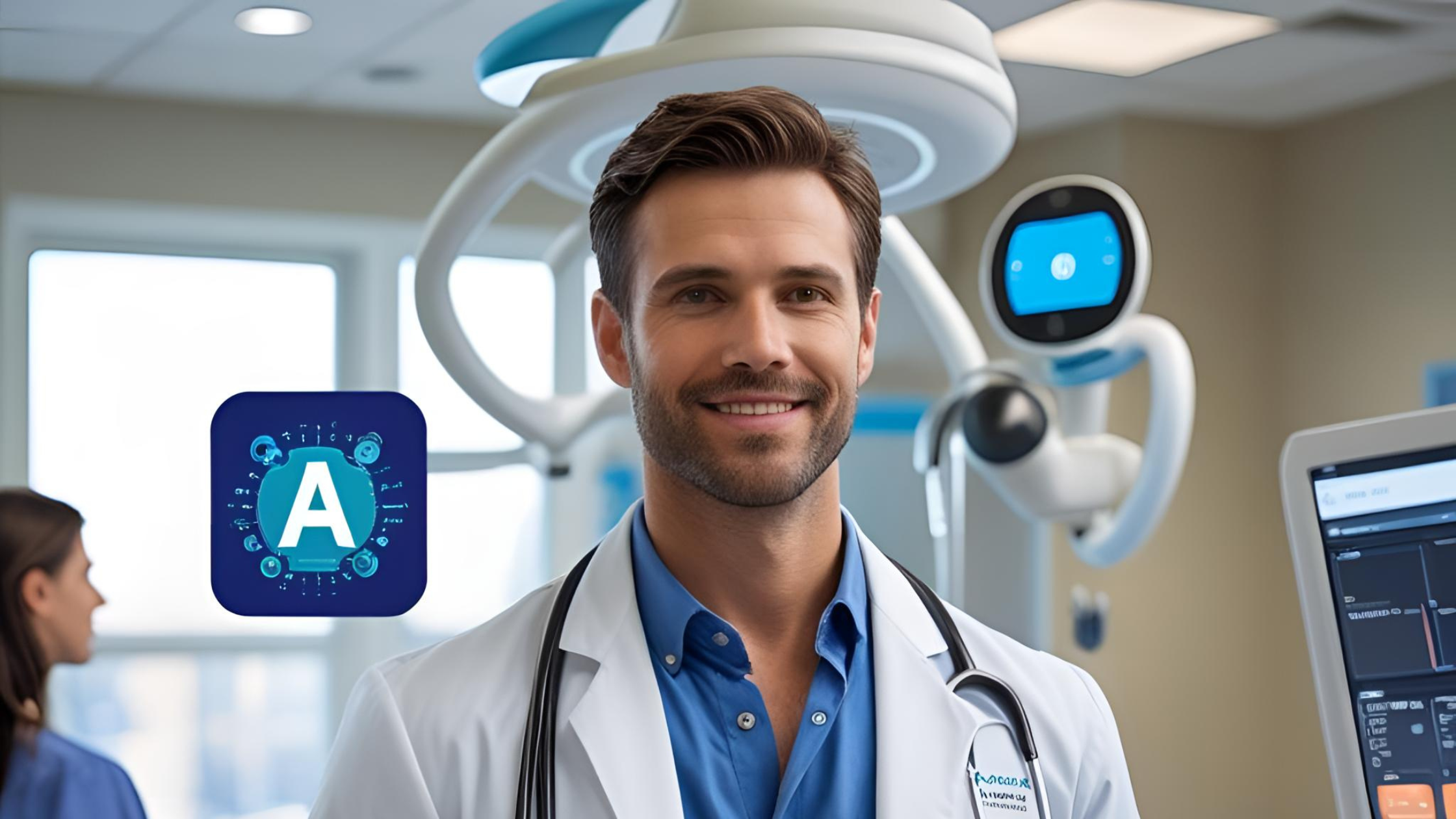AI-Assisted Medical Scribes: Bridging the Gap Between Technology and Human Expertise

Introduction
In today’s fast-paced healthcare environment, medical scribing has become essential in reducing physician burnout and improving documentation accuracy. Traditionally, human scribes assisted doctors by transcribing patient encounters, allowing physicians to focus more on patient care rather than administrative tasks. However, with the rise of artificial intelligence (AI), the landscape of medical scribing is evolving.
Many companies now offer fully AI-powered scribing solutions, leveraging natural language processing (NLP) and speech recognition to generate medical notes automatically. Additionally, AI-driven scribing is being embedded within electronic health record (EHR) systems, promising real-time transcription and automation.
While AI has introduced efficiency into medical documentation, it is far from perfect. Fully automated scribing solutions face challenges related to accuracy, contextual understanding, compliance, and physician trust. This is where AI-assisted scribing presents a balanced alternative—combining AI’s speed with human expertise to ensure high-quality documentation.
In this article, we’ll explore the challenges and opportunities of AI in medical scribing and why AI-assisted solutions are the future of medical documentation.
The Role of AI in Medical Scribing
AI is reshaping medical scribing by automating transcription, structuring clinical data, and integrating directly with electronic health records (EHRs). AI-powered scribing solutions primarily rely on speech recognition and natural language processing (NLP) to convert doctor-patient conversations into structured clinical notes.
Key AI Technologies in Medical Scribing:
- Speech-to-Text AI – Converts spoken words into written text in real-time.
- Natural Language Processing (NLP) – Helps interpret medical terminology and context.
- Machine Learning (ML) Algorithms – Improve accuracy over time by learning from past transcriptions.
- EHR Integration – AI-generated notes are automatically populated into EHR systems.
Many healthcare technology companies now offer fully AI-powered scribing tools, aiming to eliminate the need for human scribes. These solutions promise efficiency and cost savings by reducing the time physicians spend on documentation.
However, fully automated scribing is not always reliable. AI often misinterprets medical jargon, struggles with diverse accents, and fails to capture contextual nuances in patient interactions. This is why AI-assisted scribing—where AI generates a draft that a human scribe refines—offers a more practical and effective solution.
By combining AI’s speed with human oversight, AI-assisted scribing ensures greater accuracy, compliance, and physician trust, making it the preferred approach for many healthcare providers.
Challenges of Fully AI-Powered Medical Scribing
While AI-powered medical scribing solutions offer automation and efficiency, they face significant challenges that prevent them from fully replacing human scribes. These challenges impact accuracy, workflow integration, physician trust, and compliance.
Accuracy and Contextual Understanding
AI-powered scribing tools rely on speech recognition and natural language processing (NLP), but they often struggle with:
- Medical Jargon and Complex Terminology – AI can misinterpret technical terms, abbreviations, or specialty-specific language.
- Accents and Speech Variations – Physicians and patients have diverse accents, speech speeds, and styles, making accurate transcription difficult.
- Contextual Ambiguity – AI may not differentiate between similar medical terms or correctly interpret physician intent.
These errors can lead to inaccurate medical records, increasing legal risks and potential harm to patients.
Physician Trust and Adoption Barriers
Many doctors remain skeptical about fully AI-powered scribing due to:
- Loss of Control Over Documentation – Physicians often need to review and correct AI-generated notes, reducing time-saving benefits.
- Inability to Capture Nuances – AI struggles to understand physician-patient interactions, tone, and non-verbal cues, which are critical in medical documentation.
- Unreliable Performance in Real-World Scenarios – Background noise, multiple speakers, and overlapping conversations can lead to AI-generated inaccuracies.
As a result, many physicians hesitate to fully rely on AI-only solutions for documentation.
Compliance and Data Security Concerns
- AI-powered medical scribes must comply with HIPAA and other data privacy regulations.
- Concerns exist over data storage, processing, and potential breaches when using cloud-based AI tools.
- Legal and Ethical Risks – AI errors in medical records could lead to compliance violations or malpractice claims.
Without human oversight, AI alone may not meet the stringent documentation standards required in healthcare.
Workflow Integration Issues
- AI-only solutions do not always integrate seamlessly into existing EHR workflows.
- Physicians may need to spend extra time correcting AI-generated notes, which defeats the purpose of automation.
- Many specialties require customized documentation that AI alone cannot handle effectively.
Opportunities and Advantages of AI-Assisted Scribing
While fully AI-powered scribing faces challenges, AI-assisted scribing offers a more practical solution by combining automation with human expertise. This hybrid approach leverages AI to improve efficiency while ensuring accuracy through human oversight.
Faster Documentation Without Losing Quality
- AI can quickly generate draft medical notes, significantly reducing the time needed for documentation.
- Human scribes review, edit, and refine these drafts, ensuring that the final documentation is accurate, clear, and contextually correct.
- This reduces physician workload while maintaining high-quality documentation.
Improved Physician Experience and Workflow
- Doctors can focus more on patient care instead of spending excessive time on EHR documentation.
- AI-assisted scribes ensure that physicians don’t have to review and edit AI-generated errors, improving workflow efficiency.
- The smoother documentation process leads to better physician satisfaction and reduces burnout.
Better Adaptability Across Specialties
- AI alone struggles with specialty-specific medical terminology and complex cases.
- AI-assisted scribes customize documentation based on physician preferences and specialty requirements.
- This ensures better accuracy and relevance in various medical fields, including cardiology, orthopedics, dermatology, and more.
Compliance and Security Benefits
- AI-assisted scribing ensures HIPAA compliance and data security, as human scribes can monitor AI outputs for potential compliance issues.
- The hybrid model minimizes the risk of AI-generated inaccuracies that could lead to legal or regulatory violations.
- Physicians retain control over documentation, ensuring that patient records are both accurate and compliant.
Why AI-Assisted Scribes Are the Future
The medical scribing industry is evolving, but fully AI-powered solutions still have limitations in accuracy, compliance, and physician trust. AI-assisted scribing is emerging as the best approach, leveraging technology while keeping human expertise at the core.
AI Alone is Not Enough
- AI lacks contextual awareness, making misinterpretations and errors common in complex patient interactions.
- Many physicians still prefer some level of human oversight to ensure accuracy.
- AI can assist in speeding up documentation, but without human refinement, the risk of medical errors and compliance issues increases.
AI-Assisted Scribing Enhances Efficiency Without Compromising Accuracy
- AI can handle repetitive tasks, such as transcribing conversations and structuring notes.
- Human scribes then review and refine the AI-generated content to ensure accuracy, clarity, and adherence to physician preferences.
- This reduces physician workload without sacrificing the quality of medical documentation.
Improved Scalability and Cost-Effectiveness
- AI-assisted scribing allows healthcare organizations to scale their scribing operations without a drastic increase in costs.
- Unlike fully manual scribing, where hiring and training new scribes take time, AI-assisted models speed up documentation while maintaining quality.
- This makes it a more sustainable and cost-efficient solution for hospitals, clinics, and group practices.
Human Oversight Ensures Compliance and Patient Safety
- AI-generated medical notes must comply with HIPAA and other data privacy regulations.
- Human scribes ensure compliance by reviewing AI-generated content for potential legal and ethical concerns.
- This reduces the risk of errors that could lead to malpractice claims or regulatory penalties.
How TransDyne's AI-Assisted Medical Scribing Solution Stands Out
At TransDyne, we believe that AI alone cannot replace the precision, adaptability, and compliance expertise of human scribes. That’s why our AI-assisted medical scribing solution is designed to offer the perfect balance of automation and human oversight—helping healthcare providers reduce their documentation burden without compromising accuracy.
AI + Human Intelligence for Unmatched Accuracy
- Our AI-powered system captures and structures patient interactions in real-time, generating a first draft of the clinical note.
- Experienced medical scribes review, edit, and refine the AI-generated notes, ensuring 100% accuracy and contextual relevance.
- This process eliminates common AI errors, reducing the need for physicians to make manual corrections.
Seamless EHR Integration
- Unlike standalone AI solutions, our service integrates smoothly with major EHR systems, reducing workflow disruptions.
- Scribes can customize documentation formats based on physician preferences and specialty-specific requirements.
- Physicians receive ready-to-use, structured notes that align with their workflow, saving them time and effort.
Compliance-First Approach
- Our solution ensures HIPAA-compliant documentation, with rigorous security protocols to protect patient data.
- Human scribes cross-check AI outputs to ensure that notes meet legal and regulatory standards.
- This reduces the risk of documentation errors that could lead to compliance violations or malpractice issues.
Personalized and Scalable for Any Practice Size
- Whether for independent practitioners, group practices, or large hospitals, our solution is scalable to fit different healthcare settings.
- AI-assisted scribing allows rapid onboarding and scalability, ensuring that practices can handle increasing patient volumes without additional administrative burdens.
- Our human scribes ensure physician-specific customizations, making documentation more personalized and reliable.
The best medical scribe providers are proficient in various EHR systems, allowing for smooth implementation and minimal learning curves. Whether using Epic, Cerner, or another platform, an experienced scribe team adapts to your existing medical records system, ensuring real-time documentation support.
Medical scribes improve accuracy by capturing patient interactions directly into the EHR, reducing errors and incomplete notes. Virtual medical scribes leverage secure technology to connect remotely, ensuring reliable and HIPAA-compliant documentation. Onsite scribes work within the practice, providing hands-on support for EHR navigation and data entry.
A strong medical scribe company offers customization, enabling tailored workflows that fit different specialties. Integration should enhance physician productivity, allowing for better patient interactions without sacrificing medical documentation quality.
Choosing a medical scribes provider with advanced technology and seamless EHR integration ensures a smooth transition, improved efficiency, and more time for patient-focused care.
Why Choose TransDyne's AI-Assisted Scribing Service?
The future of medical scribing is not about choosing between AI and human expertise—it’s about leveraging the strengths of both. While fully AI-powered scribing solutions promise automation, they fall short in accuracy, contextual understanding, compliance, and physician trust. AI alone is not enough to meet the complex demands of clinical documentation.
This is where AI-assisted scribing emerges as the most effective solution. By combining AI’s ability to quickly generate draft notes with human scribes ensuring accuracy and compliance, healthcare providers get the best of both worlds—efficiency without compromise.
At TransDyne, we specialize in AI-assisted medical scribing that enhances physician productivity while ensuring high-quality, compliant, and contextually accurate documentation.
If you’re looking for a smarter, more reliable scribing solution that saves time without sacrificing accuracy, get in touch with us today!
Share this :
Latest blog & articles
Learn about new product features, the latest in technology, solutions, and updates.
Medical Scribe Services: Cost, ROI, and Productivity Gains for Physicians in 2026
Medical Scribe December 17, 2025 Medical Scribe Services: Cost, ROI, and Productivity Gains...
How to Create a Litigation-Ready Medical Timeline: Step-by-Step Guide
Medical record review December 11, 2025 How to Create a Litigation-Ready Medical Timeline:...
Top 10 Challenges in Medical Record Review 2026— And How to Solve Them
Medical record review December 3, 2025 Top 10 Challenges in Medical Record Review 2026— And...



